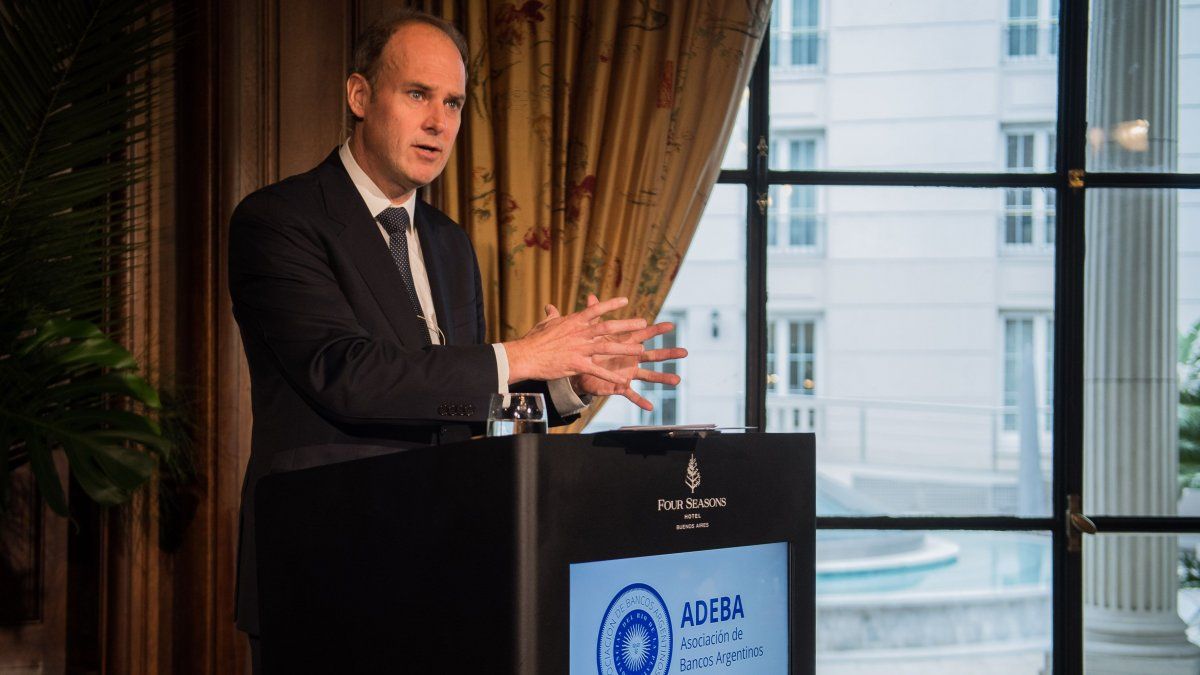They detail that Leliqs stock is around $20,000 billion as of September 2023 and detail that this is approximately 10% of GDP, three times the monetary base or the equivalent of the BCRA’s total gross reserves.
The document raises some criticisms of the monetary regulator’s handling of these instruments, since they consider that The BCRA should stop using Leliqs rates as a monetary policy rate. “It is an instrument that other countries do not use,” they say.
They believe, however, that central banks usually use active rates (the Leliqs is a passive rate) or reference rates to influence financial markets and that the Leliqs should only reflect the interest paid by the BCRA for its remunerated liabilities. .
“It is to be expected that the monetary policy rate, which is what private individuals pay in their financial transactions and determines the other rates of the economy, will be higher than what the BCRA pays for its remunerated liabilities.”“, they say.
Definition of Leliq by banks
Regarding what the Leliq are, The banks indicate that these are securities that the banks have as support for deposits in pesos and a monetary policy tool used to sterilize excess pesos, which the monetary authority places daily through auctions.
They explain, as was made clear in the presidential debate, when the candidate Javier Milei asked Patricia Bullrich what she was going to do with them and she did not know how to answer, “that their management is one of the challenges that the next government will face at the time to design its economic program.”
The Leliq are neither a bomb nor a snowball
Thus, they assured that it is a challenge, but they deny the famous phrase that they are “a bomb” destined to explode or a “snowball” that grows autonomously.
And, from ADEBA they consider that “they are a liability remunerated in pesos of the BCRA that can – and must – be managed in a manner consistent with the decrease in inflation, fulfilling the obligations of the State and maintaining financial stability” and they point out that, to For this reason, a credible economic program is needed, renouncing all types of financing to the Treasury with monetary emission and technical expertise.
“This challenge should not be faced with “shortcuts” or creative solutions, since behind the Leliqs are the depositors and trust in the financial system,” they point out.
And they claim that, With a new government and a credible economic program, the factors that made the Leliqs grow would disappear and others would appear, which will reduce their real stock and performance.
The banks’ recommendation to end Leliq
In that sense, They recommend that the two turbines that made grow the Leliqs in real terms: monetary financing to the Treasury (TN) and the purchase of public securities by the BCRA. “These two factors meant a monetary issue of $6,800 billion in the last 12 months at September 2023 values, which was absorbed via Leliqs,” they say. And they claim that this is almost 35% of the current stock.
But, on the other hand, there would be a series of factors that would reduce the stock of Leliqs. Among the factors that could lead to the contraction of the Leliqs, the following stand out:
Sale of Treasury securities from the BCRA portfolio: The BCRA has securities in pesos from the National Treasury that it bought at market price, for the equivalent of half of the Leliqs and they assure that “the sale of these securities, once market appetite arises, would generate the reverse process: absorption of pesos and reduction in Leliqs stock.” For every 10 percentage points (pp) of the current stock of securities that the BCRA sells of those securities in its possession, it can reduce the current amount of the Leliq by 5 pp. In the extreme – unlikely – that the BCRA sold on the market (either to the public or private sector) all of its TN securities in pesos, the amount of the Leliqs could be reduced by half.
- Remonetization of the economy. In August, the demand for the monetary base was 2.6%, reaching one of its lowest historical levels (graph 2). It is to be expected that a new government will restore, at least, a minimum of confidence and increase the demand for money (circulating in the hands of the public). If the monetary base were to go from the current 2.5% to 5% (which is below the average of the last 15 years), this will allow an additional reduction in the stock of Leliqs by $6,000 billion (30% of the current stock).
- Leliqs performance decline. The new government’s economic plan will surely foresee starting with a high real exchange rate and a sharp drop in public spending, quickly converging to fiscal balance. In this context, the interest rates that fixed-term depositors will demand (which will in turn determine the Leliqs rate) will be more influenced by the expected devaluation rate than by the expected inflation, which will be higher due to several factors(2 ). Thus, the real value of the amount of the Leliqs would be reduced. This lower yield in real terms, added to the reduction in the total stock, will cause the “weight” of the Leliqs’ interests on inflation to be lower and decreasing over time. It is worth clarifying that the BCRA should stop imposing minimum rates for fixed-term deposits.
- Other factors. In addition to those mentioned, there are other factors linked to the elections and instruments of monetary and exchange policy, which can contribute to reducing the amount and interests of the Leliqs. The description of these factors would require making specific assumptions about said policies, which exceed the scope of this note.
Source: Ambito
I am a 24-year-old writer and journalist who has been working in the news industry for the past two years. I write primarily about market news, so if you’re looking for insights into what’s going on in the stock market or economic indicators, you’ve come to the right place. I also dabble in writing articles on lifestyle trends and pop culture news.




